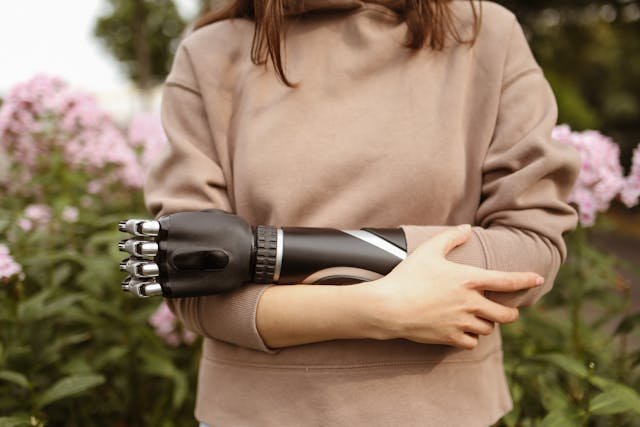For someone who has just undergone an amputation or is preparing for one, the idea of using a prosthetic soon after surgery can feel both exciting and intimidating. Immediate prosthetic fitting, also called early or post-operative prosthetic use, allows people to stand, balance, and sometimes walk during the first few weeks of recovery. While this method has been shown to support healing and speed up rehabilitation, it’s still surrounded by a lot of misunderstanding.
At Robobionics, we meet people every day who have heard myths about early prosthetic fitting—from friends, relatives, or even outdated information. These myths can lead to fear, hesitation, and missed opportunities for a better recovery. In this article, we’ll take a close look at the most common misconceptions, explain what the science really says, and help you feel confident about making informed decisions during your recovery journey.
Myth 1: Immediate Prosthetic Fitting Is Unsafe
One of the biggest concerns people have is that using a prosthetic right after surgery is risky. They worry that it could harm the healing limb or cause complications. This fear is understandable, especially when the body is still in a fragile state. But when done correctly, immediate fitting is not only safe—it’s beneficial.
The Role of Medical Evaluation Before Fitting
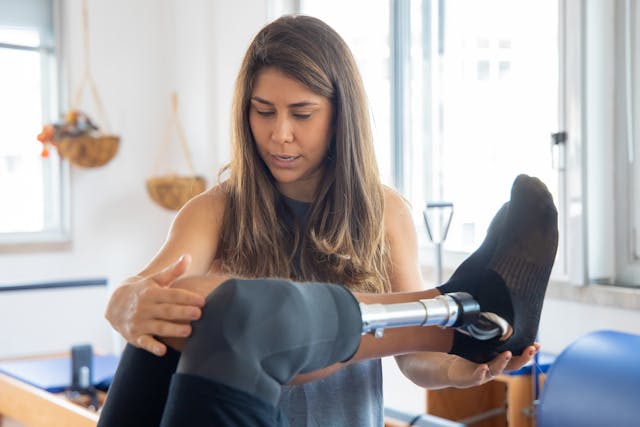
Immediate prosthetic fitting does not mean every patient gets a device the moment surgery is over. There is a proper evaluation first. The surgeon checks if the wound has closed well, if there is no infection, and if swelling is under control. Only then does the prosthetist begin the fitting process. This careful timing ensures that the body is ready.
At Robobionics, we always coordinate with the surgical and rehab teams before fitting any device. We follow a clinical checklist that puts safety first, and we never move forward unless it’s clear that the limb is ready for early use.
How the Prosthetic Is Designed to Protect
An immediate prosthetic is not the same as a final one. It is lighter, softer, and more flexible. The socket is lined with cushion-like material to protect the skin and tissues. It spreads pressure evenly to avoid injury. Users begin with short sessions—standing for a few minutes, shifting weight, or walking a few steps with help.
These early movements are controlled and gentle. They help the body stay active without putting stress on the healing area. The prosthetist makes regular adjustments to ensure comfort and safety throughout.
Why Supervised Use Prevents Problems
Early prosthetic use always happens with professional support. It might take place in a rehab clinic, with a therapist by your side, or during a home visit from a trained prosthetist. These professionals guide your movements, watch your limb for changes, and make sure you feel stable during every session.
At Robobionics, we train every user and their caregiver on safe use at home. We also provide a clear schedule of follow-ups to track healing and make any needed changes. When the right steps are followed, immediate fitting becomes a safe and empowering part of recovery.
Myth 2: It’s Too Painful to Wear a Prosthetic Right After Surgery
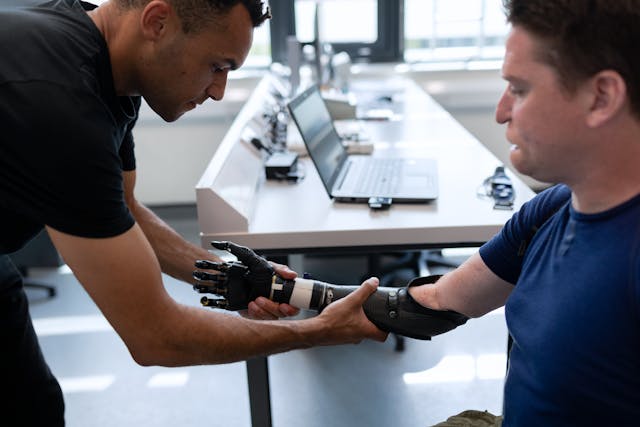
Another common belief is that using a prosthetic shortly after surgery must hurt. After all, the limb is still healing. But most users are surprised to find that early prosthetic use doesn’t cause pain—it often helps relieve it.
Gentle Pressure Reduces Swelling
After surgery, it’s normal for the limb to swell. That swelling can cause tightness, soreness, and discomfort. Wearing a soft, cushioned prosthetic socket can actually help reduce this swelling. The socket applies light compression to the limb, which improves blood flow and helps fluids drain more efficiently.
This gentle pressure can ease the throbbing sensation many people feel in the first weeks. As the swelling goes down, the limb becomes more comfortable—and the prosthetic becomes easier to wear.
Desensitization Begins with Early Contact
The skin on the residual limb is often very sensitive in the beginning. Even light touch can feel strange. But this sensitivity fades faster when the limb is exposed to consistent, gentle contact. Wearing a soft prosthetic liner during short sessions helps the skin adjust.
This process is called desensitization. It teaches your skin and nerves that pressure is okay. As the body gets used to the prosthetic, the strange sensations go away, and the limb feels more natural under load.
At Robobionics, we use breathable, skin-friendly materials in every immediate-fit socket. We also teach users how to care for their skin and spot any signs of pressure early—so nothing becomes painful or dangerous.
Movement Can Reduce Phantom Pain
Many amputees experience phantom limb pain—sensations that seem to come from the part of the limb that’s no longer there. These sensations can be sharp, tingling, or even burning. Interestingly, early movement and weight-bearing have been shown to reduce these feelings.
By standing and walking gently with a prosthetic, you help the brain rewire itself to match your new body. This helps reduce mixed signals that lead to phantom pain. While not a cure, early use is often a helpful tool in managing discomfort.
Myth 3: Everyone Should Wait Months Before Using a Prosthetic
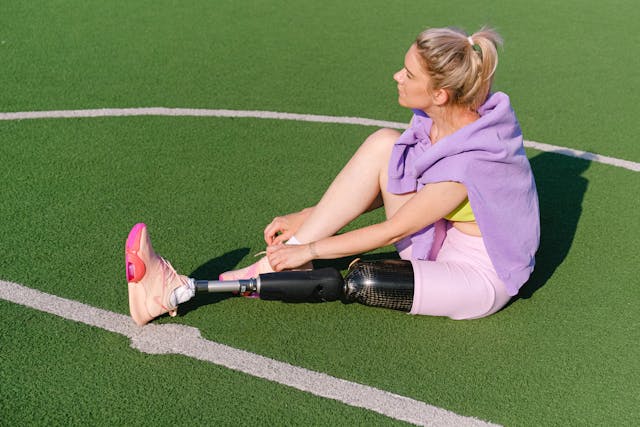
It’s true that some people need time before wearing a prosthetic. But this doesn’t mean everyone should wait. With proper care and planning, many people can begin using a temporary prosthetic within days or weeks after surgery.
Healing Time Varies for Everyone
No two people heal the same way. Factors like age, overall health, circulation, and surgical technique all affect recovery speed. Someone with diabetes or poor blood flow may need more time. Someone who is otherwise healthy may be ready much sooner.
That’s why there’s no one-size-fits-all answer. The key is evaluating each person individually. If the wound is clean, swelling is controlled, and the person feels emotionally ready, there is no reason to delay unnecessarily.
At Robobionics, we tailor our timeline to your body—not the calendar. We monitor healing, work with your doctor, and only begin fitting when the time is right for you.
Early Use Doesn’t Mean Rushing
Using a prosthetic early doesn’t mean you’ll be walking long distances on day one. It simply means beginning safe, supervised movements when your body is ready. Even standing for one minute can make a difference.
This small start helps your muscles stay active, your balance stay sharp, and your confidence grow. These little steps add up to big progress over time.
We always begin with short, guided sessions at Robobionics. There is no pressure to move faster than you’re ready. We follow your pace and celebrate each milestone.
Waiting Too Long Can Slow Recovery
Delaying prosthetic use too long can lead to other problems. Muscles weaken. Joints stiffen. Fear increases. These make it harder to stand and walk when the time finally comes. Starting early helps prevent these setbacks and keeps the body ready for progress.
The goal is not speed—it’s strength. Early use builds strength in body and mind. And that strength makes every stage of rehab easier and more successful.
Myth 4: Immediate Prosthetic Fitting Is Only for Young or Athletic People
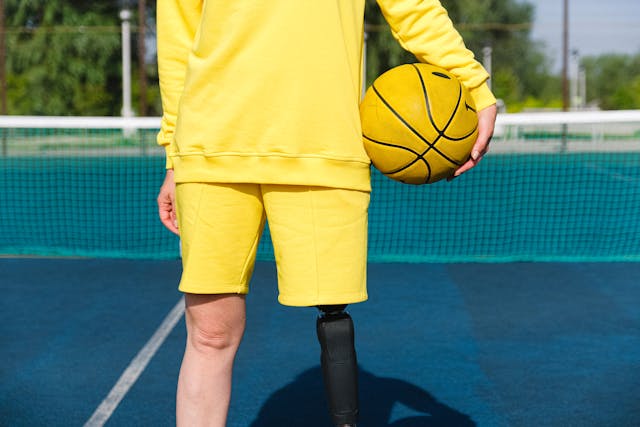
Many people believe that only young, fit, or highly active individuals can benefit from immediate prosthetic fitting. This assumption is not just incorrect—it can also prevent many older adults or people with limited mobility from accessing an approach that could improve their recovery.
Age Does Not Determine Readiness
It’s a common misconception that older adults should wait longer before using a prosthesis. But age alone does not determine how fast someone heals or how well they can adapt. In fact, many older users thrive with early prosthetic use because it helps maintain muscle tone and balance. The more time they spend without standing or moving, the more at risk they are of losing strength, coordination, and independence.
Early movement with a lightweight prosthetic can be a safe way to maintain daily routines and stay engaged in therapy, even if it’s just for a few minutes a day. This can make the transition to using a permanent prosthetic easier and less overwhelming.
At Robobionics, we fit prosthetics for users of all ages. Whether you’re in your 20s or in your 80s, we build systems that match your health, strength, and pace—not your age.
Fitness Level Is Not the Main Factor
Another myth is that you must be in peak physical condition to use an immediate prosthesis. The truth is, most people—regardless of their fitness level—can benefit from early standing or walking if they have the right support. The focus is not on walking fast or covering long distances. It’s about using your muscles, keeping your joints flexible, and giving your body a head start on recovery.
In fact, those who feel weak or out of shape may benefit the most. With supervision and a carefully fitted prosthetic, they can start moving again without the risk of strain or injury.
Robobionics works with rehab teams to provide extra care for users with low strength or energy levels. We use lighter materials, more padding, and simplified sockets to make early movement accessible for everyone.
Early Movement Builds Confidence for All Body Types
Confidence plays a big role in recovery. When people feel unsure of their strength or body size, they may avoid trying to move. But with the right guidance, they quickly realize that movement is possible—and that they are more capable than they thought.
Immediate fitting helps remove fear and creates small wins early in the process. It doesn’t matter if someone has never exercised before. What matters is helping them believe in their ability to heal, stand, and take steps forward.
At Robobionics, we meet every user where they are. Our goal is not perfection—it’s progress. And we design every fitting to support that progress, no matter who’s wearing the prosthetic.
Myth 5: Prosthetics Fitted Early Will Need Constant Replacement
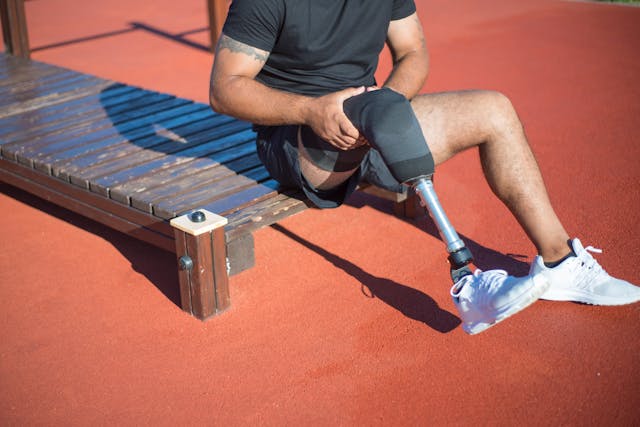
Some believe that starting early will mean getting one prosthetic after another, wasting time and money. But early prosthetic systems are designed to adapt. While it’s true that the residual limb changes shape, this does not mean you need to keep replacing the entire device.
Temporary Prosthetics Are Made to Be Adjustable
Early prosthetics are often called interim or preparatory prosthetics. They are meant to support healing and get your body ready for the final fit. These devices are built with adjustable sockets, modular parts, and soft liners. As your limb changes in size and shape, these parts can be modified to maintain a good fit.
In many cases, only the socket or liner needs to be changed—not the entire prosthetic. These updates are quick, affordable, and part of the natural recovery process.
At Robobionics, we build flexibility into every early device. Our systems are modular so that we can adapt the fit without creating a whole new prosthesis each time.
Early Investment Leads to Better Long-Term Outcomes
Waiting for the limb to fully heal before using any prosthetic may seem like a way to avoid extra cost. But in reality, it can lead to more time in therapy, slower progress, and a harder transition to the final prosthesis. This often means more appointments, more time off work, and more emotional stress—which also carries a cost.
Early prosthetic fitting helps shape the limb, strengthen the muscles, and prepare your mind and body for success. This often leads to fewer complications, fewer socket issues, and less need for major corrections later on.
Robobionics always explains the full process to users and families. We offer flexible packages, maintenance plans, and support options that make early use affordable and sustainable.
Planned Upgrades Are Part of the Process
Recovery is a journey, and your prosthetic journey evolves with it. Starting with a temporary device and upgrading to a permanent one is a standard part of care—not a problem or waste. When planned well, this path is smooth, efficient, and often more successful than waiting for everything to happen at once.
Robobionics works with users to map out their journey. From the first fitting to the final device, we ensure every upgrade adds value—and brings you one step closer to full independence.
Myth 6: Immediate Prosthetic Fitting Delays Wound Healing
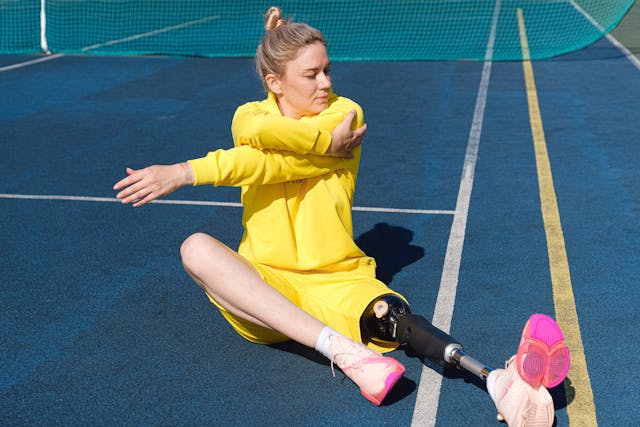
One more common fear is that wearing a prosthetic too soon after surgery might disturb the wound or slow healing. People often imagine that the pressure or movement from a prosthetic will interfere with stitches, cause infection, or lead to reopening of the surgical site. While these concerns are valid, they’re usually based on outdated information or poor-fitting devices—not on how immediate fitting is done today.
Proper Timing Is Key to Safe Use
Immediate fitting does not mean forcing a prosthetic onto an unhealed limb. It’s a carefully timed process that begins only when the wound has reached a safe stage. Surgeons and prosthetists work together to determine if the limb is ready. If there’s any sign of infection, poor closure, or excess drainage, fitting is delayed until it’s safe to proceed.
Modern immediate-fit prosthetics are designed to protect—not harm—the healing site. Their gentle compression actually supports the healing process by reducing swelling and improving blood flow.
At Robobionics, we follow strict medical protocols before any fitting. We never move forward until the surgical team gives the all-clear. Your safety always comes first.
Prosthetic Sockets Are Designed to Protect
Today’s early sockets are made using soft liners, breathable materials, and custom-molded shapes that avoid pressure on vulnerable areas. The fit is checked carefully before each session. Any changes in the limb—such as increased warmth, redness, or discomfort—are noted and addressed immediately.
When worn correctly, the prosthetic does not disturb the wound. In fact, many users report that they feel more comfortable with the prosthetic on because it reduces throbbing and supports the limb evenly.
Robobionics offers continuous support during this phase, ensuring that every adjustment is made based on real-time feedback. If a user needs to pause or take extra healing time, we adapt the plan without judgment or pressure.
Early Movement Encourages Better Healing
There’s growing evidence that early weight-bearing and light movement help the body heal—not just in the limb, but overall. Standing helps with circulation, digestion, breathing, and mood. It also supports mental focus and reduces the stress that can come from being bedridden for too long.
When healing is paired with controlled activity, users often feel more energetic and motivated. This motivation, combined with close medical supervision, often leads to better wound healing outcomes—not worse.
At Robobionics, we’ve seen this balance work beautifully. With the right care, the right prosthetic, and the right mindset, users heal faster and move forward with confidence.
Conclusion
There are many myths about immediate prosthetic fitting, and most of them come from a place of fear, confusion, or outdated knowledge. It’s easy to understand why people worry—after surgery, everything feels uncertain. But the truth is, early prosthetic use, when done correctly, is one of the most powerful ways to support recovery.
It doesn’t increase pain. It doesn’t delay healing. And it’s not just for the young or athletic. It’s for anyone who wants to regain control, stay strong, and build confidence early in the journey. The key is working with the right team—people who understand the science, listen to your needs, and adjust the process to match your pace.
At Robobionics, we’re proud to provide safe, supportive, and personalized early prosthetic fitting. We combine modern technology with compassionate care, making sure every user feels empowered from their first fitting to their final step.
If you’re considering immediate prosthetic fitting or have questions about the right timing for your recovery, reach out to Robobionics today. Book a free consultation and get expert guidance from a team that puts your well-being first—every step of the way.



